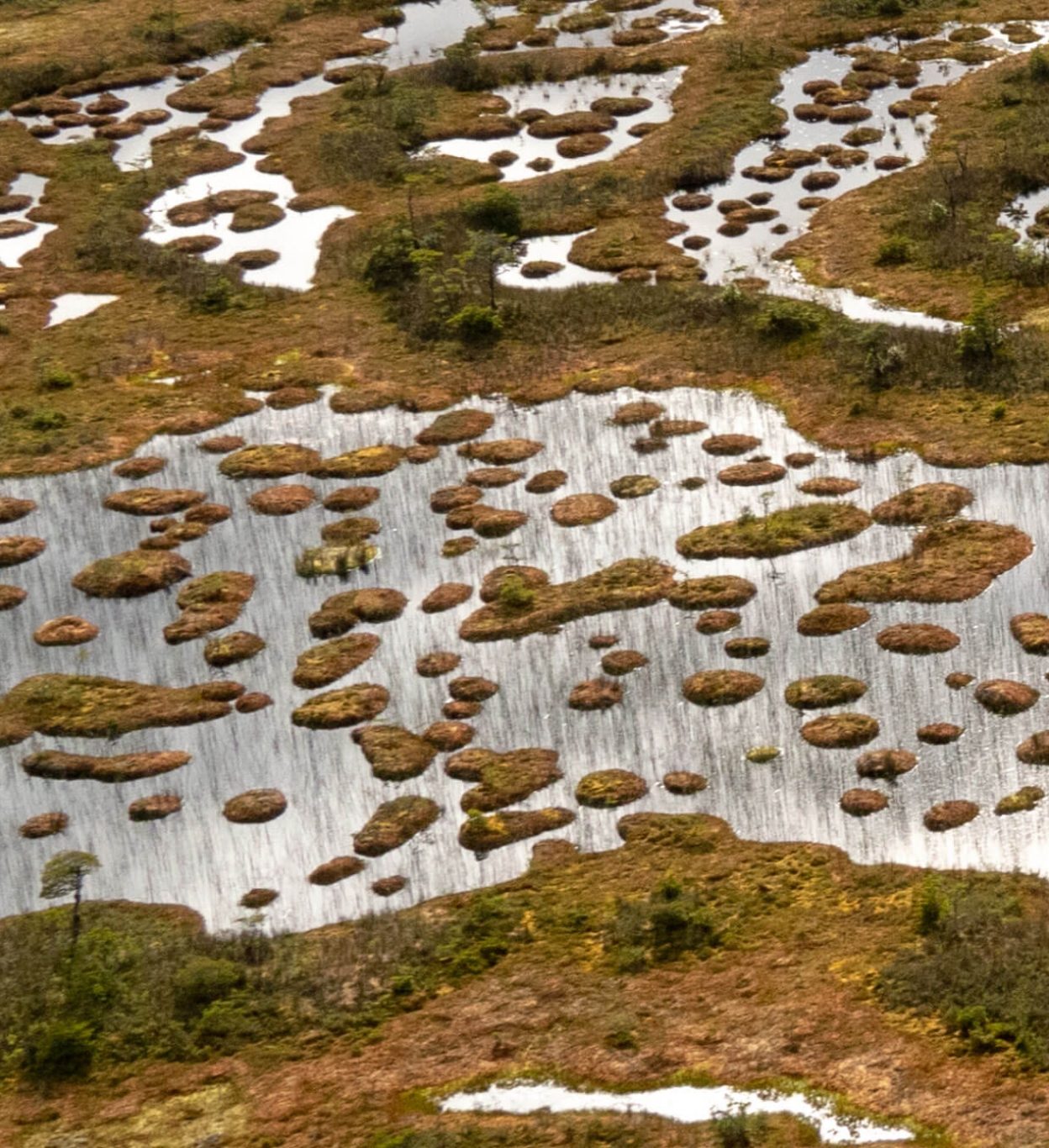Peatbogs →
Peatbogs are very important because they regulate water cycles and help mitigate the effects of climate change, since they are great reservoirs of fresh water and carbon.
Peatbogs have a vertical structure consisting of two main components: the upper part is made up of Sphagnum sp. moss, while peat lies beneath it. The upper level acts to regulate the water cycle in the ecosystem where it is located, functioning like a sponge that has the capacity to accumulate several times its own weight in water. The bottom part is an accumulation of decomposing organic matter in anoxic (almost total lack of oxygen) and acidic conditions.
At the Kreen Foundation, we are carrying out various actions to protect these ecosystems, in order to promote greater commitment to the conservation and sustainable management of peatbogs, which have great environmental and social value.
"Peatbogs are very important because they regulate water cycles and help mitigate the effects of climate change, since they are great reservoirs of fresh water and carbon".
Peatbogs are very important because they regulate water cycles and help mitigate the effects of climate change, since they are great reservoirs of fresh water and carbon.
Peatbogs have a vertical structure consisting of two main components: the upper part is made up of Sphagnum sp. moss, while peat lies beneath it. The upper level acts to regulate the water cycle in the ecosystem where it is located, functioning like a sponge that has the capacity to accumulate several times its own weight in water. The bottom part is an accumulation of decomposing organic matter in anoxic (almost total lack of oxygen) and acidic conditions.
At the Kreen Foundation, we are carrying out various actions to protect these ecosystems, in order to promote greater commitment to the conservation and sustainable management of peatbogs, which have great environmental and social value.




